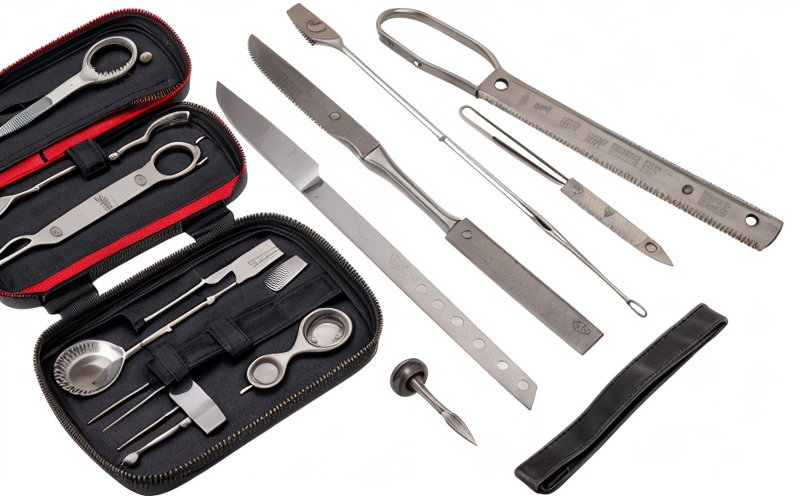Usability and Human Factors Testing of Handheld Surgical Instruments
The usability and human factors testing of handheld surgical instruments is a critical component in ensuring that medical devices are safe, effective, and user-friendly. This process involves evaluating the design of surgical tools to determine how well they align with ergonomic principles, ease of use, and overall efficiency during procedures. The goal is to minimize errors, improve patient safety, and enhance surgical outcomes.
Usability testing focuses on understanding how surgeons interact with the instruments, including grip comfort, visibility, control precision, and fatigue resistance. Human factors engineering plays a key role in identifying potential issues that could arise during prolonged use or high-pressure situations. By addressing these aspects early in the development process, manufacturers can reduce risks associated with improper handling or misuse.
Our laboratory uses advanced technologies such as motion capture systems to analyze hand movements while using various types of surgical instruments. This data helps us identify areas where improvements are needed to optimize ergonomics and functionality. Additionally, we conduct surveys and interviews with actual users (surgeons) to gather qualitative feedback about their experiences.
For instance, when testing a new pair of forceps designed for neurosurgery, our experts would first examine the geometry of the jaws ensuring they fit comfortably into the surgeon's hands. They then observe how easily the instrument picks up and holds tissue during different maneuvers. Finally, subjective assessments are gathered from surgeons who have used prototypes in simulated operating rooms.
- ISO 14971:2016 provides guidelines for risk management during design and manufacture of medical devices which includes considerations around human factors.
- The FDA's guidance documents also emphasize the importance of incorporating usability testing into the overall development cycle of surgical instruments.
Through rigorous evaluation, we aim to provide actionable insights that help designers refine their products before they reach clinical settings. This proactive approach ensures compliance with relevant regulations while simultaneously enhancing product performance and patient care.
Why Choose This Test
Selecting usability and human factors testing for your surgical instruments is essential because it offers several key benefits:
- Enhanced Safety: Ensures that the tools are designed in a way that reduces the likelihood of accidents or injuries during procedures.
- Patient Benefits: By improving the ease with which surgeons can perform tasks, patient recovery times may be shortened and complications reduced.
- Improved Efficiency: Ergonomic designs lead to better workflow within the operating room, potentially decreasing procedure durations.
Furthermore, undergoing such testing demonstrates a commitment to quality and innovation, which can significantly boost your brand’s reputation among healthcare professionals. It also helps ensure that your product meets regulatory requirements and achieves broader market acceptance.
International Acceptance and Recognition
- The European Union’s Medical Device Regulation (MDR) requires manufacturers to demonstrate compliance through clinical evaluation, including usability testing.
- In the United States, the Food and Drug Administration (FDA) encourages companies to conduct human factors evaluations as part of their premarket submissions.
- ISO standards like ISO 14971 provide international frameworks for addressing human factors in medical devices.
By participating in these tests, you ensure that your products meet not only local but also global standards. This broadens the potential customer base and facilitates smoother entry into various markets around the world.
Competitive Advantage and Market Impact
Adopting comprehensive usability and human factors testing strategies can give your company a significant edge in today’s competitive medical device industry. Here are some ways this service can enhance your position:
- Differentiation: Offering superior ergonomic solutions sets you apart from competitors who may not invest as heavily in user-centered design.
- Regulatory Compliance: Demonstrating adherence to international standards increases confidence among regulatory bodies, potentially speeding approval processes.
- Customer Satisfaction: Products that are easier for surgeons to use tend to gain higher ratings from healthcare institutions and individual doctors.
The investment in these tests pays off by leading to loyal customers who recommend your products to others. Moreover, satisfied regulatory agencies often translate into quicker market access opportunities. These factors collectively contribute to increased sales volumes and profitability.





